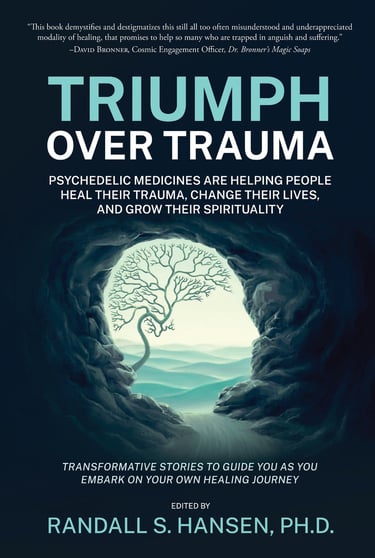Diets Don’t Work… and Other Truths About Food
Anti-Inflammatory, Atkins, Blood Type, Carnivore, DASH (Dietary Approaches to Stop Hypertension), Detox, Fasting, Hormone, Keto/Low Carb, Longevity, Low Fat, Mediterranean, Paleo, Raw Food, South Beach, Vegan, Vegetarian, Weight Watchers, Whole30, Zone.
How is it that there have been thousands of diet books published and diet plans developed – and yet they are all wrong?
Why over the past 60 years have we been so focused on diet and weight loss?
How is it that we have gotten food and diet so wrong?
The only diet you should follow is the diet that works best for your body, your health.
Yet, every year, especially at the start of a new year, tens of millions of people start a new diet… and most will quit after yet another unsuccessful attempt at trying the latest fad or hype.
At the same time, we see that more than two-thirds of Americans are either overweight or obese, and childhood obesity has tripled in the past three decades. Type II diabetes is exploding, as are numerous chronic illnesses – which are now becoming the leading cause of death.
Dieting – the idea of restricting foods – does not work, and often leads to increased weight gain after any initial weight loss.
What is happening in our culture?
The Thin History of Dieting
Most experts trace the beginning of dieting to an obscure publication – the first “diet” book-- that gained some notoriety in England and the U.S. More than a century ago, in 1863, overweight English undertaker William Banting decided to start a low-carb diet to lose weight, which he wrote about it in his booklet “Letter on Corpulence.”
In the early part of the 1900s, the focus turned more to wellness (but also included dieting), and all sorts of crazy wellness centers, sanitariums, and spas opened across the country, offering miracle cures, liquid diet, cleanses, mineral water soaks, and other “cutting edge” ideas.
It really was not until the 1960s when dieting became part of the mainstream with the introduction of Weight Watchers (WW), which has become one of the most popular diet plans in the country. The basic principle of WW is that for weight loss to occur, a person needs to consume fewer calories than they expend. The problem, as we now know, is that counting calories is useless and time-consuming; calories are NOT equal.
Ketosis came into the mainstream beginning in the 1970s when Dr. Robert Atkins introduced his Atkins’ Diet Revolution, focused on the importance of limiting carbohydrates, especially products made with simple carbohydrates. After being rebranded and separated from the now-deceased Dr. Atkins, many other experts joined the Keto/Low Carb revolution, believing it is the only and best diet.
The 1980s were a time of some bizarre and short-lived fad diets, including the Cabbage Soup Diet, Grapefruit Diet, Cottage Cheese Diet, Beverly Hills Diet, Scarsdale Diet, Jenny Craig Diet, and others.
Unfortunately, the 1980s also saw a massive increase in the low-fat diet movement, forever changing our food system – and changing the diets of most Americans, whether they knew it or not.
In the 1990s, the Mediterranean diet, based on healthy fats such as olive oil, and including whole grains, lean meats and fish, and lots of fresh vegetables, became a popular diet – and remains to this day, especially touted by longevity experts who believe it is the “perfect” diet.
More recently, two extremes have become more popular. Plant-based is a marketing term on so many products, trying to attract those who are vegan and vegetarian, which has definitely become popular as healthy diets. On the other side, the carnivore diet (and all its variations), which has gained in popularity over the last several years, focuses on only eating healthy meats and fats.
Backward/Incorrect Advice from the Government
The U.S. government was generally not that concerned with our diet until two major events. (Yes, during the world wars, the government focused on educating the citizens on food shortages and rationing, but it was done related to the war effort, not for nutrition.)
First, in the 1950s, then-President Dwight Eisenhower suffered a serious heart attack while in office, and a frenzy began in determining the root cause of cardiovascular/heart disease. One researcher’s voice dominated all others and thus the beginning of 70 years of misguided recommendations. Ancel Keys incorrectly “determined” that fat was the cause of heart disease. (We now know that not only was the research and coding flawed, but even with the flaws, sugar was just as significant a factor as fat, but Keys ignored the data.)
Second, in the 1970s, with a faulty understanding by scientists that foods with saturated fat such as eggs and meat could raise LDL cholesterol and cause heart attacks, the U.S. Senate developed the first set of dietary guidelines for Americans – and the theme of reducing fat continued, as well as filling the gap left by milk, cheese, and meats with carbs. The message: Meat and dairy bad; carbs good.
By the late 1980s and beyond, the packaged and prepared foods had a complete overhaul based on these dietary guidelines. Manufacturers replaced good fats with dangerous seed oils, but they didn’t stop there. They hired nutrition and taste scientists and completely reformulated products, stripping the fiber away and adding more sugar (and salt) to find that irresistible flavor that has now been proven to be addictive.
Side note: The reduction in fiber is causing major problems with health today, including a correlation with the rapid increase in colon cancer among younger people.
To further reinforce the misguided food recommendations, the U.S. borrowed a concept the Swedes developed in the 1970s (and later abandoned)… the Food Pyramid. Interestingly, the U.S. Department of Agriculture (USDA) was the one responsible for dietary recommendations. The USDA has since revised the concept in 2005 to create what it called MyPyramid; then, in 2011, that was replaced by MyPlate… and the advice is still skewed in the wrong direction.
Besides the faulty research blaming fat over sugar, the other major problem with the government food guidelines is they are based originally on food shortages – not on providing a healthy, balanced diet. Just the base of the original pyramid shows the major flaw in thinking; the base is the one food category that directs the highest levels of daily consumption – recommending 6-11 servings per DAY of bread, cereal, rice, and pasta – far, far too much, especially with how ultra-processed these foods are today.
Final Thoughts on Dieting and Food Recommendations
We continue to understand how the body uses different nutrients – and just how different each person is, including their gut microbiome (which plays a major role in health and digestion). Ideally, in a few more years, we will have even more clarity.
For now, the best advice is do NOT follow any fad diets nor any diets that people recommend to you as “guaranteed.” Please do NOT rush to have surgery or take prescription pills or injections for weight loss.
Instead, please listen to your body.
Determine what mix of nutritious proteins, beneficial fats, gut-enriching fiber, and healthy carbs your body needs to THRIVE. For some, that may be keto; for others, vegetarianism; for others, carnivore. Again, the key is what the food you consume does to your body.
Please also INVEST in your food. It’s not just the mix of nutrients, but the quality of the food itself. Buying organic and local helps a lot. Cooking from scratch rather than eating fast foods or prepared foods is better. Buying pastured meats from regenerative farms rather than store-bought, industrially-raised meats. Using grassfed butter rather than margarine or seed oils.
Finally, remember that any diet you follow that is restrictive – that leaves you wanting/craving – is going to fail. But do know that the sugar that is pervasive in our food system will make it hard for you to change, as sugar is now classified as an addictive substance that will leave you with cravings. Please develop a mindset to fight that sugar addiction.
Your diet is the major driver of your physical health, so please put much more time and care into what you eat, but also remember that other lifestyle changes will help make you more fit – changes in movement/exercise, changes in alcohol consumption, changes in tobacco use, changes in screen time.
Additional Food/Diet/Nutrition Resources
Looking for more diet and nutrition information? See more at RandallSHansen.com
Dr. Randall Hansen is an advocate, educator, mentor, ethicist, and thought-leader... helping the world heal from past trauma. He is founder and CEO of EmpoweringSites.com, a network of empowering and transformative Websites, including EmpoweringAdvice.com.
He is the author of the groundbreaking Triumph Over Trauma: Psychedelic Medicines are Helping People Heal Their Trauma, Change Their Lives, and Grow Their Spirituality and the well-received HEAL! Wholeistic Practices to Help Clear Your Trauma, Heal Yourself, and Live Your Best Life.
Dr. Hansen's focus and advocacy center around true healing ... healing that results in being able to live an authentic life filled with peace, joy, love. Learn more by visiting his personal Website, RandallSHansen.com. You can also check out Dr. Randall Hansen on LinkedIn.







